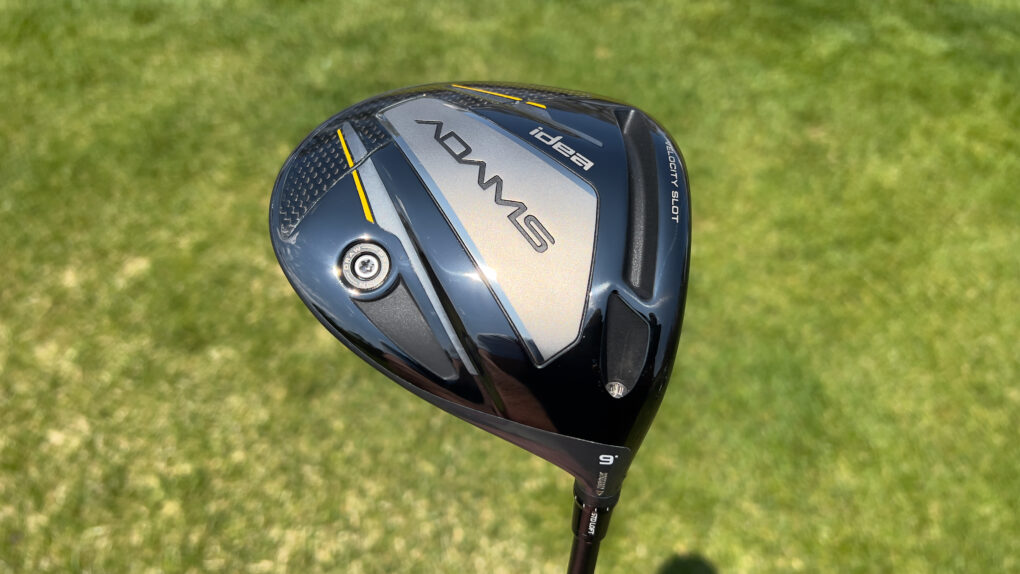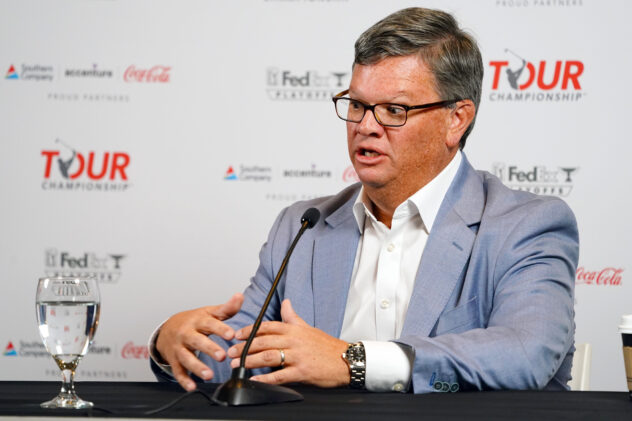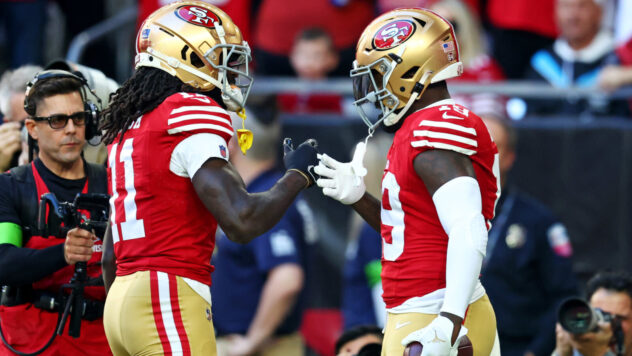Adams Golf relaunches with new woods, hybrids, irons, wedges and putters

Fifteen years before the current golf boom started, Adams Golf was on a roll. The Plano, Texas-based company made highly regarded hybrids played by numerous PGA Tour stars off contract, disguising them by covering the clubs with headcovers from brands they were paid to use. Adams also made innovative woods, irons, wedges and putters before it was purchased by TaylorMade-Adidas Golf in 2012 for $70 million.
In the following years, some Adams Golf technologies and ideas made their way into TaylorMade clubs, but the brand faded with time. Until now.
Adams Golf – which is still owned by TaylorMade – has announced a rebranding of the company, including a new logo, a new line of clubs and a new direct-to-consumer sales approach. Adams’ target market is the large number of new players who have taken up the game over the last three years, younger golfers (27 percent of new golfers are aged 18-34 in 2020) and golfers who have rediscovered the sport. Adams is not making boxed sets for these players or focusing on max-game-improvement clubs. Instead, the goal is to offer well-made equipment that has technologies, features and benefits found in higher-priced clubs but sell those clubs at a lower cost.
People’s buying habits have changed since Adams was a prominent brand in the ’90s and 2000s, so the company is trying to make itself available to younger players and other golfers who are used to buying things online. You won’t find Adams’ new drivers, fairway woods, hybrids, irons, wedges or putters in golf shops. Instead, individual clubs and full sets can be purchased at adamsgolf.com, which all come with a 60-day, money-back guarantee.
Here’s the new Adams Idea lineup for 2023, all of which will be available for right- or left-handed golfers:
Adams Idea driver

Adams Idea driver (David Dusek/Golfweek)
Gear: Adams Idea driver
Price: $299 with UST Mamiya Helium NanoCore Black shaft and Lamkin’s Crossline 360 grips
Specs: Titanium body and face with carbon fiber crown and adjustable hosel. Lofts: 9, 10.5 and 12 degrees
To someone who has played golf for several years or swung a lot of drivers, the Adams Idea driver has a few visual hints reminiscent of a TaylorMade driver, but there are some classic Adams concepts here, too.
The 460-cubic-centimeter head has a large carbon fiber crown to help save weight on the top and lower the center of gravity. There is also a carbon fiber sole panel on the toe side and a weight screw in the heel portion of the sole that help give the club a draw bias without adding offset.

The Adams Idea driver has a carbon fiber crown. (David Dusek/Golfweek)
The titanium face has a variable thickness to help broaden the sweet spot, and a large Velocity Slot behind the leading edge in the sole helps the lower portion of the hitting area flex more efficiently at impact.
The adjustable hosel allows players to increase or decrease the stated loft by as many as 2 degrees.
Adams Idea fairway woods

Adams Idea fairway wood (David Dusek/Golfweek)
Gear: Adams Idea fairway woods
Price: $199 with UST Mamiya Helium NanoCore Black shaft and Lamkin’s Crossline 360 grips
Specs: Stainless steel body and face with carbon fiber crown. Lofts: 3-wood (15 degrees), 5-wood (18 degrees), 7-wood (21 degrees)
Like the new Adams Idea driver, the Idea fairway woods have been made to look like clubs experienced golfers carry, but their game-improvement features were designed to make them easy for golfers who play less frequently.
There is a massive Velocity Slot behind the leading edge to enlarge the sweet spot and help improve performance on thin shots. There is also a weight in the heel portion of the sole to give the club a draw bias.

Adams Idea fairway woods have a tri-sole design that lifts the heel and toe areas for better turf interaction. (David Dusek/Golfweek)
The carbon fiber crown reduces weight on the top and helps lower the center of gravity, and the clubs have a low profile that makes it easier to strike the ball in the middle of the face. That should encourage a higher launch angle and make it easier for players at every level to hit high, soft-landing shots.
The tri-sole design reduces the overall area that comes into contact with the turf, which should help golfers retain speed through the hitting zone.
Adams Idea hybrids

Adams Idea hybrid (David Dusek/Golfweek)
Gear: Adams Idea hybrids
Price: $179 with UST Mamiya Helium NanoCore Black shaft and Lamkin’s Crossline 360 grips
Specs: Stainless steel body and face with carbon fiber crown. Lofts: 3 (20 degrees), 4 (23 degrees), 5 (26 degrees), 6 (30 degrees)
There was a time when people heard the names “Adams” and immediately thought about hybrids, so the pressure was on to make the new Idea hybrids worthy of their name.
On the bottom of the club, designers added a large Velocity Slot behind the leading edge to enlarge the sweet spot, add spin and improve performance on low-hit shots. There is also a weight in the heel to give the club a draw bias.
The crown is made of carbon fiber, which is not often found in hybrids. As it does in the driver and fairway woods, the carbon fiber crown reduces weight on the top of the club and lowers the center of gravity to encourage higher-flying shots.

Like the Idea fairway woods, the Adams Idea hybrids have a tri-sole design for better turf interaction. (David Dusek/Golfweek)
The tri-sole design improves turf interaction and helps golfers retain speed through the hitting zone.
The address view resembles Adams’ past hybrids, with a slightly enlarged toe area, minimal offset and a clean look.
Adams Idea irons

Adams Idea irons (David Dusek/Golfweek)
Gear: Adams Idea irons
Price: $599 (4-PW, AW) with KBS Max 85 steel shafts and Lamkin Crossline 360 grips; $699 with UST Helium NanoCore graphite shafts
Specs: Cast, hollow-bodied stainless steel irons. Available 4-iron through attack wedge.
The Adams Idea irons were designed to be playable for a wide variety of golfers and can be classified as modern game-improvement irons. If they were a part of the TaylorMade franchise, they would be between the TaylorMade P•790 irons and the Stealth irons in terms of size and forgiveness, having a moderately thick topline, some offset and a tri-sole design to reduce the effect of hitting the turf behind the ball instead of making ball-first contact.
The hollow-body construction allows the face to flex more efficiently at impact to increase ball speed and distance. The hosel lengths vary by loft, with the longest clubs having a shorter hosel to lower the center of gravity and help get the ball up more easily. The short irons have longer hosels to elevate the center of gravity and make it easier to flight the ball down on approach shots.

Like other game-improvement clubs, the Adams Idea irons have moderate offset and a modern topline. (David Dusek/Golfweek)
Unlike the TaylorMade P•790 irons, which have SpeedFoam Air, and the Stealth irons, which have an internal Echo Dampening system, the Adams Idea irons have internal structures that dissipate sound and reduce vibrations for better feel.
The lofts of the new Idea irons are not overly strong by modern standards, with the 7-iron being 30 degrees and the pitching wedge that comes with the set at 44.5 degrees.
Adams Idea wedges

Adams Idea wedges (David Dusek/Golfweek)
Gear: Adams Idea wedges
Price: $99 each with KBS Hi-Rev 2.0 steel shafts and Lamkin’s Crossline 360 grips, $119 with UST Helium NanoCore graphite shafts
Specs: 54 and 58 degrees
Perhaps more than any other clubs in the relaunched Adams stable, the Idea wedge takes a chance by adding game-improvement features that some traditional golfers might be trepidatious to try.
In the playing position, golfers will see a moderately high-toe design, a hitting area covered by grooves and minimal offset, so visually it looks like many popular wedges. The faces and grooves in the Idea wedges are fully milled ,too.
Flip the club over to see a massive undercut on the bottom of the head. Removing steel from that area reduced weight, which was then repositioned around the edges of the head and behind the topline. This design helps increase perimeter weighting for forgiveness and elevates the center of gravity so shots feel more solid.

In the address position, golfers will see the Adams Idea wedges have a slightly elevated topline. (David Dusek/Golfweek)
The other performance feature to note is the aggressive heel and toe relief created by the C Grind. While many mid- and higher-handicap players will play wedge shots from a square position, the sole grind allows players to open the face and get the leading edge under the ball on tight lies without exposing too much bounce. In other words, as players gain experience and confidence around the greens, this wedge will allow them to try a wider variety of shots.
The 54-degree model has 14 degrees of bounce, and the 58-degree club has 12 degrees of bounce. Both wedges have wide and shallow grooves to help remove moisture and debris from the hitting surface and boost spin.
Adams Idea Prospect, Mission putters

Adams Idea Prospect putter (David Dusek/Golfweek)
Gear: Adams Idea Prospect, Mission putters
Price: $149 each
Specs: Cast 303 stainless steel with a grooved face. 34 or 35 inches long.
The Adams Idea putters, the blade-style Prospect and the fang-style mallet called the Mission, were named for prominent streets in San Diego. You have seen putters with these shapes before, and that’s by design. Golfers new to the game and making their first investment in quality clubs want equipment that looks like the gear used by veteran players.

The C-Groove face softens feel, enhances sound and helps produce a more consistent roll. (David Dusek/Golfweek)
However, the hitting surface of the Prospect and Mission are pure Adams, thanks to a semicircular grooved pattern in the middle. Referred to as C-Groove, it is milled into the 303 stainless steel heads and helps soften feel, enhance sound and produce a more consistent roll.
Both clubs have a dark, anti-glare finish and a single white alignment line. The Prospect has a long slant neck hosel and some toe hang, while the Mission has a single-bend neck and is face-balanced.















